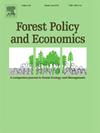欧盟和芬兰森林政策的政策一体化和一致性
IF 3.8
2区 农林科学
Q1 ECONOMICS
引用次数: 0
摘要
森林日益受到各种相互竞争的需求的影响,包括它们作为碳汇、生物多样性储存库、原材料和可再生能源来源的作用。虽然欧洲联盟(欧盟)没有管理共同森林政策的能力,但与森林有关的问题是跨多个政策领域处理的,这往往给政策一致性带来挑战。近年来,通过直接或间接影响森林的法律基础,欧盟层面的治理得到了显著扩展。我们对1995年至2024年期间欧盟和芬兰森林政策的整合和一致性进行了事后分析。我们研究了欧盟森林政策是如何发展的,以及欧盟层面的发展是否与芬兰森林政策的发展相一致。我们的数据包括66个监管政策工具,使用文件分析和政策分析框架进行分析。我们确定了欧盟森林政策的三个不同的政策时代:可持续森林管理时代、生物经济时代和生态危机时代。这些时代反映了政策重点的转变——从以生产为导向的方法转向日益紧迫的气候和生物多样性危机。欧盟和芬兰之间的政策目标在最初的两个时期基本一致,但在生态危机时期出现分歧。总体而言,欧盟森林政策的碎片化多部门治理对实现政策一体化和一致性提出了重大挑战。加强欧盟森林政策的政策一体化和一致性需要在决策过程中有效地考虑和协调森林提供的各种各样的利益。本文章由计算机程序翻译,如有差异,请以英文原文为准。
Policy integration and coherence of EU and Finnish forest policy
Forests are increasingly subject to competing demands, including their role as carbon sinks, reservoirs of biodiversity, sources of raw material and renewable energy. Although the European Union (EU) has no competence to regulate common forest policy, forest-related issues are addressed across multiple policy domains, which often creates challenges for policy coherence. In the recent years, the EU-level governance has expanded significantly through legal bases that directly or indirectly impact forests.
We conducted an ex-post analysis of forest policy integration and coherence of EU and Finnish forest policy during the period 1995 to 2024. We examined how EU forest policy has developed, and whether the EU level development has been coherent with the development of Finnish forest policy. Our data comprised 66 regulatory policy instruments which were analysed using document analysis and policy-analytical framework.
We identified three distinct policy eras in EU forest policy: the era of sustainable forest management, the era of bioeconomy, and the era of ecological crisis. These eras reflect transitions in policy priorities – from production-oriented approach an increasing urgency around climate and biodiversity crises. Policy objectives between EU and Finland were largely aligned during the two first eras but diverged during the era of ecological crisis.
Overall, the fragmented multi-sectoral governance of EU forest policy presents significant challenges to achieving policy integration and coherence. Enhancing policy integration and coherence in EU forest policy requires effective consideration and reconciliation of the diverse range of benefits that forests provide within the policy-making process.
求助全文
通过发布文献求助,成功后即可免费获取论文全文。
去求助
来源期刊

Forest Policy and Economics
农林科学-林学
CiteScore
9.00
自引率
7.50%
发文量
148
审稿时长
21.9 weeks
期刊介绍:
Forest Policy and Economics is a leading scientific journal that publishes peer-reviewed policy and economics research relating to forests, forested landscapes, forest-related industries, and other forest-relevant land uses. It also welcomes contributions from other social sciences and humanities perspectives that make clear theoretical, conceptual and methodological contributions to the existing state-of-the-art literature on forests and related land use systems. These disciplines include, but are not limited to, sociology, anthropology, human geography, history, jurisprudence, planning, development studies, and psychology research on forests. Forest Policy and Economics is global in scope and publishes multiple article types of high scientific standard. Acceptance for publication is subject to a double-blind peer-review process.
 求助内容:
求助内容: 应助结果提醒方式:
应助结果提醒方式:


